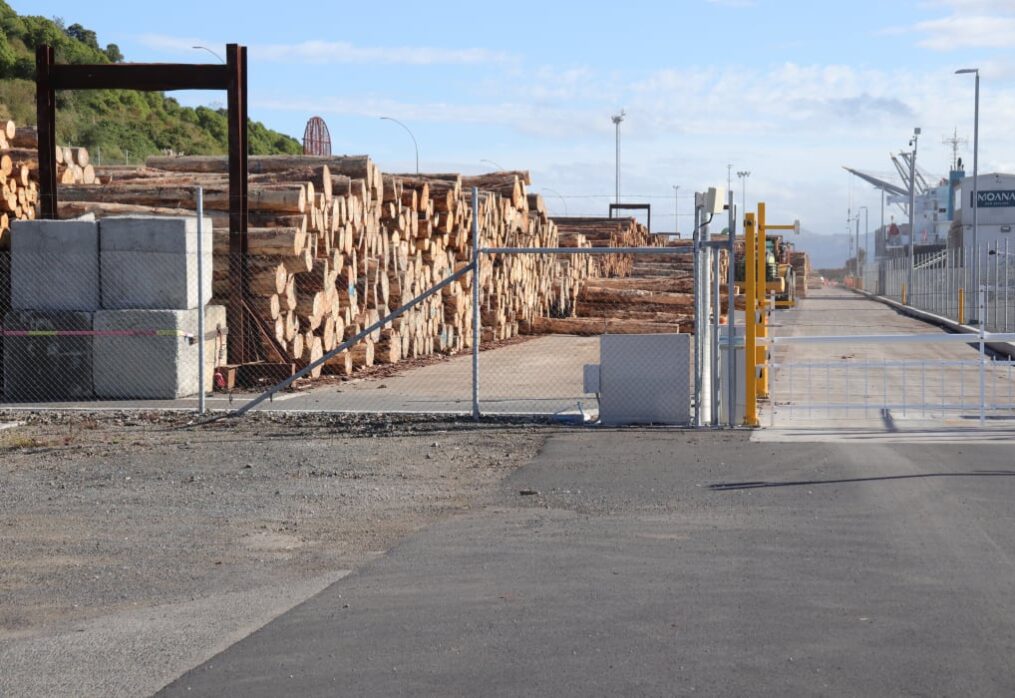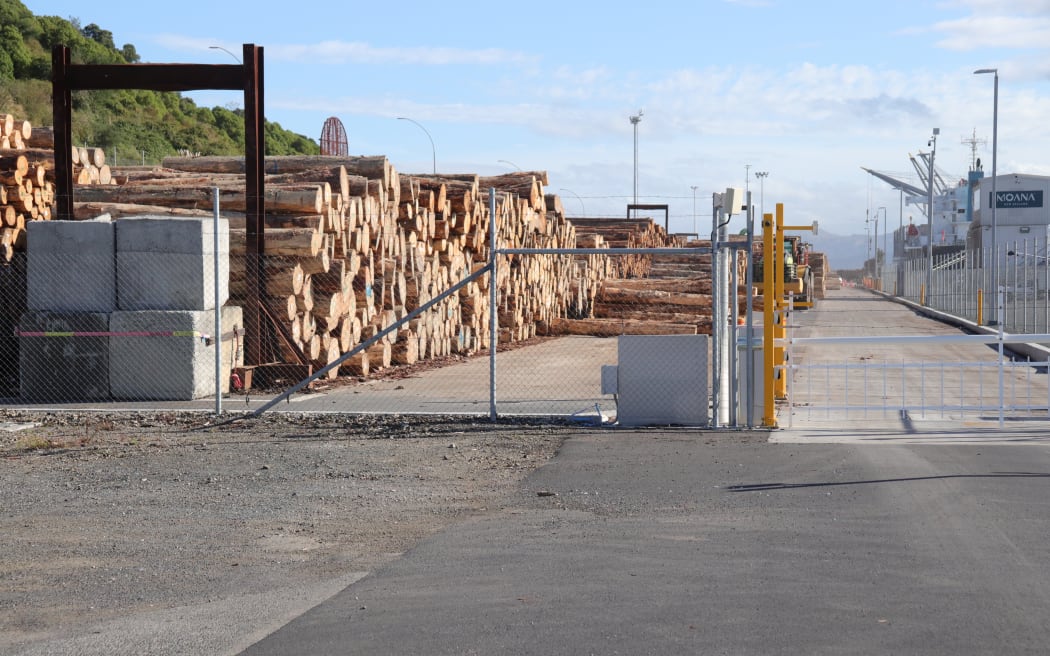Coastal shipping gets $30m boost to get more cargo vessels in service
Navigation for News Categories
Coastal shipping has received a $30 million boost from the government, aimed at improving local supply chains and helping move freight off the roads.
Logs at Eastland Port, Gisborne. File photo
Photo: RNZ / Tom Kitchin
The government has committed the money through the National Land Transport Programme (NLTP), and four selected shipping suppliers will invest more than $60m through their proposals.
Each of the suppliers – Coastal Bulk Shipping Ltd, Move International Ltd, Swire Shipping NZ Ltd and Aotearoa Shipping Alliance – will bring at least one extra coastal vessel into service, to “improve the resilience of the overall freight supply chain”, Transport Minister Michael Wood said.
“It has huge benefits for our regions, it reduces our carbon emissions and it will reduce the need for thirty-five million kilometres of road freight. That takes pressure off our roads, it reduces the wear and tear, saves money for everyone as well as saving carbon emissions.”
Supply chain disruption due to Covid-19 had shown up some lack of resilience in the freight system.
“Coastal shipping is not the whole answer but it is part of the answer.”
“Coastal shipping in particular is good at moving – and I’m simplifying a bit here – big things over a long distance where it’s not so time-critical. Road freight tends to be the best thing for getting items that need to be delivered in a more time-critical way point to point.”
The Aotearoa Shipping Alliance, one of the beneficiaries of the funding, is a nationwide network involving iwi and businesses.
Westland Minerals Sands is one of those businesses and spokesperson Ray Mudgway said the move would unlock vast resources for Māori communities across three regions, and underpin resilience for the regions.
The West Coast of the South Island, East Cape and the west coast of the North Island did not have good port or shipping systems to support the communities in times of disaster, he said.
“This is all part of changing that narrative.”
Moving freight from road to shipping would also contribute to the government’s carbon emissions savings goals, he said.
“If you look at the ports within our alliance they’ve been very strong bustling ports in the past.
If you go back a hundred years, the ports of Westport, Greymouth had multiple ships, it looked like one of the busiest ports of the country.
“It is ‘back to the future’ in some ways – but actually what we’re doing is very much going forward and unlocking some of the commodities in these communities.”
Companies would also look towards alternative fuels for ships, he said.
.



